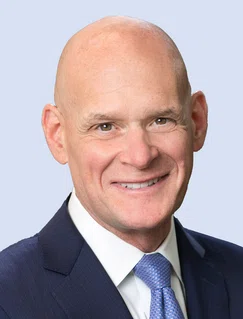

Listen to the latest episode of Credit Exchange with Lisa Lee
Published in London & New York
10 Queen Street Place, London
1345 Avenue of the Americas, New York
Creditflux is an
company
© Creditflux Ltd 2025. All rights reserved. Available by subscription only.
Opinion Direct lending

Public and private credit may be converging — but the differences are still important
by Randy Schwimmer

Randy Schwimmer
Vice chairman
Churchill Asset Management
COVID defaults could have been materially worse without private credit
Flannery O’Connor’s final collection of short stories, ‘Everything that rises must converge’, mirrors a theme often used to describe today’s credit markets. As the private credit universe expands, it is said it will begin to look more like public credit. But will it really?
Fifteen years of low rates drove demand for income-generating assets. Capital still flows out of banks into private markets, insurance companies and retail, propelling growth. Interestingly, a majority of what is sitting on bank balance sheets is investment grade, including corporate credit, mortgages and ABS. That translates to another USD 40tn of appetite.
Risk remains relative. Moody’s analysts observed that without a sustained downturn since the GFC, “private credit has not been truly tested, only quizzed”. But how did public credit fare over that period? As they also said: “COVID defaults could have been materially worse without private credit.” And rate hikes beginning in 2022 pushed the leveraged loan market offline for two years. Failing quizzes is still failing.
Innovations move from public to private
Private credit risk varies depending on where in the ecosystem you reside. We know that structural innovations favourable to borrowers tend to flow from public to private. Three decades ago, high-yield bond incurrence-only covenants were passed down to broadly syndicated loans, which became cov-lite. Then those same aggressive terms migrated (in risk-off markets) to upper middle market private credit. Great for borrowers, but for credit investors... not so much.
The traditional middle market is fundamentally different than public credit in transparency and liquidity. It’s resistant to headline risk and general market swings. When liquid loans trade down amid volatility, pricing primary issuance on ‘panicked capital’ is a challenge. But convergence is a two-edged sword. For the largest transactions, investors may benefit from enhanced liquidity and ease of access. But mega-deals are fewer in number, so lenders will compete among themselves.
Convergence is also multifaceted. Distribution channels (retail and institutional) and assets (public and private) could begin to resemble each other. And as distribution from managers to investors becomes more sophisticated, differences in asset liquidity may narrow, too.
But small private loans aren’t necessarily subject to the same dynamics. As a recent Bloomberg article highlighted, big bank trading desks struggle to make an active secondary market in illiquids. “There are not many names that are really trading in private credit,” one top alts investment manager reported. “I think there’s going to be a lot of constraints around that.”
Too much capital, too few deals?
Finally, supply and demand is front-and-centre with private credit investors. Is there too much money chasing too few deals? According to the American Investment Council, there are 14,200 private equity-owned companies in the US. That’s less than 5% of the 300,000 middle market companies between USD 10m and USD 1bn in revenues, as stated by JPMorgan. As you go up the food chain, larger corporates are accessing the non-bank market, size notwithstanding. Whether InBev or Intel, there’s plenty of corporate demand to meet supply.
Beyond traditional corporates, significant national long-term needs — by one estimate, as high as USD 100tn — exist for infrastructure, power and utilities, data centres, defence and energy transition. Match that deal supply with potential investor demand from sources including US retirement funds and you have an estimated USD 45tn.
Outside the US, the share of private capital versus the total scale of national economies is trivial. For example, European GDP is USD 24tn, yet private capital represents only USD 500bn, or 2%. Compare that to the US, with USD 25tn of private capital in a USD 30tn economy.
As private credit investors weigh the opportunities in the asset class today, they need to factor in how top managers are performing. The best direct lenders walk the delicate balance between accessing deals and markets while remaining investor-centric in asset selection. The final reckoning for the asset class over the next decade will depend on how that balance is managed.





